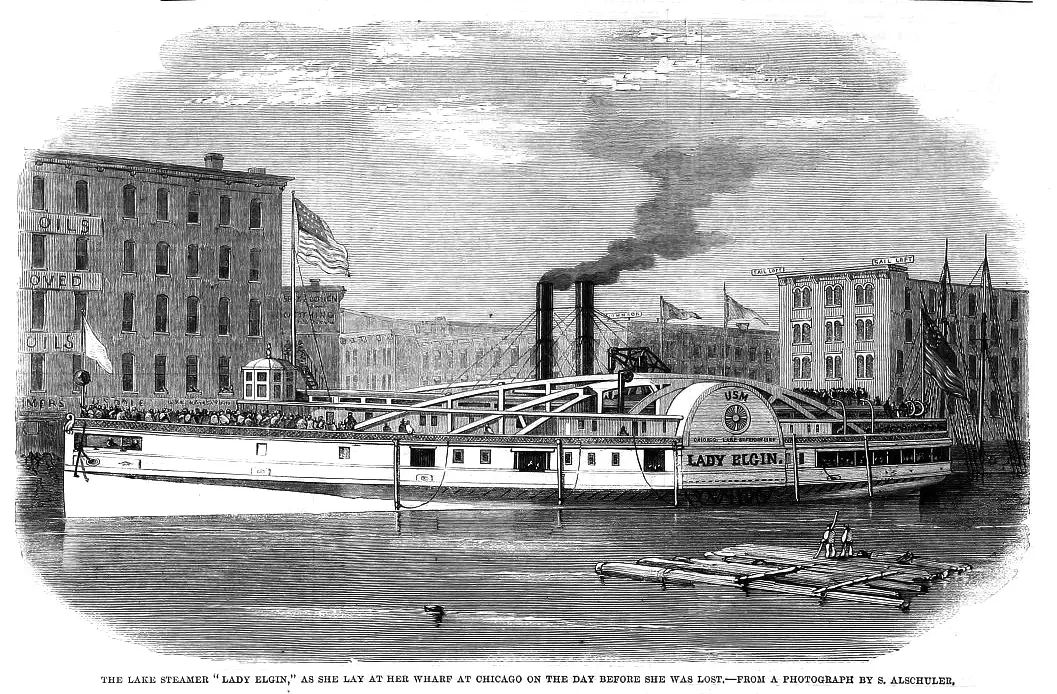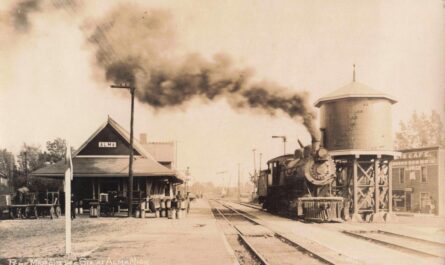There are tens of thousands of shipwrecks at the bottom of the Great Lakes. Some are famous, such as the sinking of the Edmund Fitzgerald in 1975. In 1913, an extreme storm dubbed the White Hurricane sank eight ships and took 187 lives over six hours on November 9, 1913. However, these incidents pale in comparison to one tragic incident of the sinking of the Lady Elgin in the Fall of 1860, one of the worst maritime disasters on Lake Michigan.
Table of Contents Of the Lady Elgin Disaster
What Was the Steamship Lady Elgin?
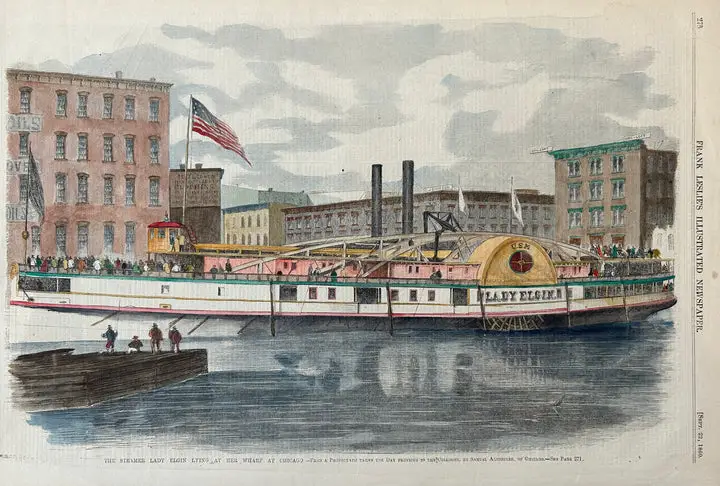
The Lady Elgin was a magnificent sight on Lake Michigan, but the sidewheeler’s short-lived life. It launched in May 1851 and was built in Buffalo, New York. The 252-foot wooden steamship was named after the wife of Canada’s Governor General from 1847 to 1854, James Bruce, 8th Earl of Elgin. In the mid-to-late 1800s, steamships were the primary means of travel between Great Lakes cities, as railways and roads were not yet widely in place.
The wooden-hulled sidewheel steamship ran passengers and freight from Chicago to Buffalo and Collingwood, Ontario. During her nine years in service, the ship suffered many incidents; she was sunk once in Manitowoc, Wisconsin, caught fire, struck a reef at Copper Harbor, Michigan, and had several mechanical failures.
What Happened During the Final Voyage of the Lady Elgin?
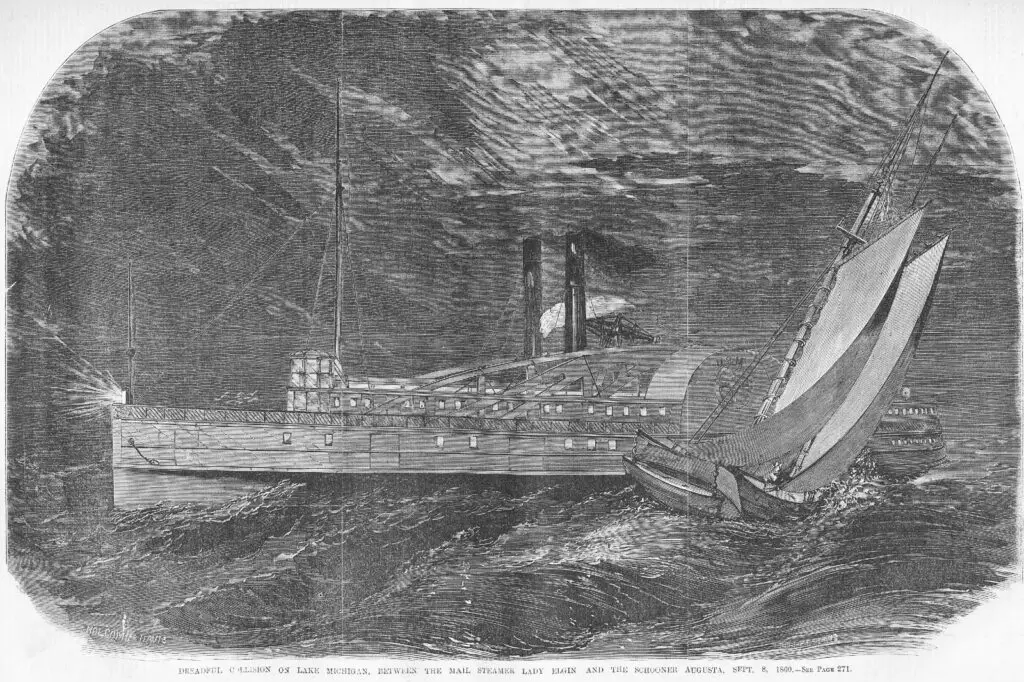
Lady Elgin left Milwaukee, Wisconsin, for Chicago on September 6, 1860, carrying Milwaukee’s Union Guard members to hear Stephen A. Douglas, Abraham Lincoln’s opponent, give a campaign address, albeit there is no solid historical proof that Douglas spoke. On board the Lady Elgin, 300 men and women spent the day of September 7 listening to political lectures, followed by an evening of entertainment by a German brass band.
That night, in gale-force winds, she was rammed by the schooner Augusta of Oswego. It had been heading out from Milwaukee when it met up with the storm and turned back. Its captain also decided that it would be safer to try riding out the storm until it abated rather than make for port in such heavy weather.
Lady Elgin and Augusta collided near Winnetka with such force that they almost split each other openly. Within 20 minutes, Lady Elgin was breaking apart and sinking.
350-400 passengers and crew were now drifting in stormy waters, holding on to anything they could as waves crashed over them repeatedly. Many were pulled under by breakers nearshore, while others held on desperately to lose their grip soon after.
The Lady Elgin sank in Lake Michigan ten miles off the fledgling town of Port Clinton, Illinois, whose geography is now divided between Highland Park and Highwood, Illinois.
Hundreds Lost Just Yards from Shore in the Lady Elgin Disaster
An early estimate placed 385 people on board the Lady Elgin, including 200 excursionists from Milwaukee, 50 regular passengers, 28 crew members, and musicians from the Union Guard band. Of those, only 98 were reported saved in the initial days following the wreck. That left approximately 287 men, women, and children lost to Lake Michigan’s depths.
Captain Jack Wilson, the ship’s commander and a seasoned navigator of Lake Superior routes, drowned within 100 feet of shore. Nearly 100 others managed to reach within 50 yards of the beach near Winnetka, only to be swept away by pounding waves before help could reach them.
“We were steering northwest by west,” said Mr. Beman, the Lady Elgin’s second mate. “After striking our vessel hung for a moment and then got clear; I went below to see what damage had been done, and when I got back the vessel was gone.”
Captain Mallott of the Augusta recounted the events that led to the collision. He first spotted the Lady Elgin’s lights through the rain and misjudged the distance.
“It was raining very hard at the time. We kept our vessel on her course east by south until we saw a collision was probable. We put the helm hard up and struck the steamer just aft the paddle box on the port side,” Mallott said.
The paddle wheel and the Lady Elgin‘s guards were torn away in the impact. Within five minutes, the steamer disappeared into the storm.
Shockwaves in Milwaukee
News of the Lady Elgin disaster reached Milwaukee the next day and spread quickly. The city’s telegraph office was overwhelmed with desperate relatives seeking updates. Entire neighborhoods were in mourning.
“In the First Ward of Milwaukee, it is said there is scarcely a home or place of business that has not lost some inmate or employee,” a report in the Chicago Times noted.
Only 21 bodies had been recovered in the initial search. Many were identified as Milwaukee residents, where the grief was widespread and civic life came to a halt.
What Happened After the Sinking of the Lady Elgin?

The most significant impact of the sinking of the Lady Elgin was that it led to new laws regarding lighting on passenger ships in the Great Lakes.
It took three years after the wreck of the Lady Elgin for a new law to be passed. The Lady Elgin disaster remains the most significant loss of life on open water in the Great Lakes history. Some believe it might have been prevented if better communication and night navigation equipment had been better. In 1864, a new ruling required sailing vessels to carry running lights.
Since there were still nearly 1,900 ships under sail by 1870, these regulations were long overdue.
Eye-Witness Accounts Reveal Last Moments Aboard the Lady Elgin
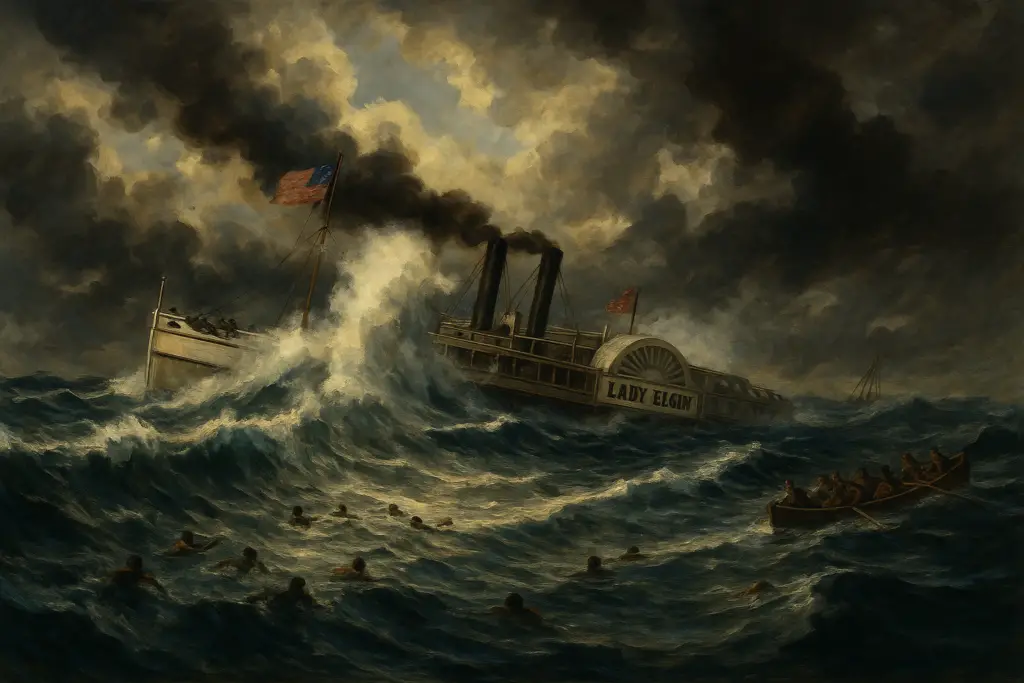
Survivors of the Lady Elgin shipwreck described a night of celebration turned into horror when the schooner Augusta collided with the sidewheel steamer around 2:30 a.m., just ten miles off the coast near Waukegan, Illinois.
The ship had left Chicago at 11:30 p.m. the previous evening, carrying over 350 people. Among them were the Union Guard of Milwaukee, several city fire brigades, and the Black and Green Yagers — all in town for a public event. Survivors described music and dancing in the forward cabin moments before the collision tore through the larboard side midship.
“In an instant after the crash all was still, and in half an hour the steamer sank,” wrote H.G. Clawry, the vessel’s clerk.
Two lifeboats were launched, one with 13 passengers and another with 8. Only four from the second boat survived. As the steamer lost power and drifted toward the beach at Winnetka, passengers attempted to cling to debris or reach rafts launched from the hurricane deck.
“The lake in every direction was filled with fragments of the wreck,” one account said. “Reporters counted 50 or 60 human beings clinging when they arrived.”
Many survivors praised Capt. Jack Wilson, who was last seen encouraging women into lifeboats and urging crew members to break open state room doors. He was reportedly washed overboard and drowned shortly after.
Faces in the Wreck: Some of Lady Elgin’s Lost and Saved
A partial list of passengers reveals the extent of the tragedy across several cities, especially Milwaukee. Noted among the lost were:
- Herbert Ingram, Member of British Parliament and founder of The Illustrated London News, and his son.
- Mrs. Simonds, Patrick Myers of Chicago, and Terry Crother.
- Lieut. George Hartsuff, of Zonacksmack.
- Col. Lumsden, editor of the New Orleans Picayune, and his family.
Survivors included:
- H.G. Clawry, clerk of the Lady Elgin.
- Michael McGrath, George Davis, Frederick Halpier, and Tim O’Bryan.
- Miss Anna Garth, Mrs. Rivers of Milwaukee, and H.W. Gunnison.
Some names were retrieved from hotel records at the Tremont House in Chicago. Still, as one report noted, “No accurate list of the number of persons on board can yet be obtained.”
Is There a Memorial for the Lady Elgin?
There are several memorials throughout Wisconsin to commemorate the devastating loss of life. A Wisconsin Historical Marker in the historic third ward in Milwaukee commemorates the tragedy. Calvary Cemetery in Milwaukee has a monument dedicated to the Lady Elgin disaster and the many lost in the tragedy. A memorial song called “Lost on the Lady Elgin” was sung at family gatherings.
With assistance from private donors and public funds (through a Department of Tourism grant), The Milwaukee Irish Heritage and Cultural Center have recently spearheaded a $200,000 project for a mammoth, two-story bronze memorial statue for this disaster that could become one of Wisconsin’s top tourist attractions. However, there is little information on the status of this effort.
Where is the wreck of the Lady Elgin?
If you want to visit the wreck of Lady Elgin, you can. She lies in Lake Michigan, near Highwood, Illinois. The wreck was discovered in 1989 by Harry Zych and later explored by the Underwater Archaeological Society of Chicago.
